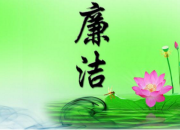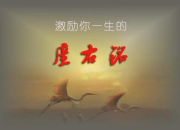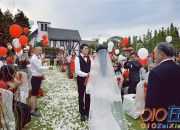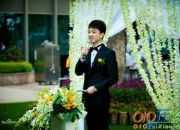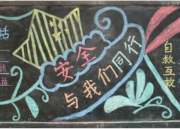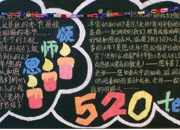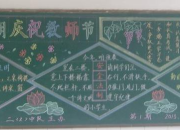西湖的英语导游词
时间:2021-08-31西湖的英语导游词范文
导读:西湖,位于浙江省杭州市西部,是中国主要的观赏性淡水湖泊,也是中国首批国家重点风景名胜区。下面小编为大家带来关于西湖的英语导游词范文,希望能帮助到大家。
The West Lake
Ladies and Gentlemen,
Good morning! I’m a tour guide . My name is ... I’m very glad to accompany you all to visit the West Lake. I’ll try my best to make your tour an enjoyable one. I expect your support and cooperation. If you have any questions or demands, please let me know and I’ll do my utmost to accommodate your needs. Thank you!
As a popular saying goes,“there is a paradise above, so are there Hangzhou and Suzhou below”. In the 13th century, Marco Polo came to Hangzhou and declared it to be “the finest, most splendid city in the world...where so many pleasure may be found that one fancies oneself to be in the paradise.” The annual visitor to this paradise amount to 20 millions, ten times as many as the local residents. But you will not feel crowded here because the lake is large, walkways are wide, the causeways are long.
The focus of the exceptionally beautiful city is West Lake(Xi Hu). West Lake covers an area of 6.38 square kilometers. The average depth is 2.27meters with deepest being 5 meters. It is 3 miles across and 9 miles around, with islets and temples, pavilions and gardens, causeways and arched bridges, flowers and trees. Three sides of the lake are surrounded by verdant(翠绿的) mountains and one side the prosperous(繁荣的.) city. After a large scale reconstruction(重建), the current West Lake has recovered the panorama(全景) over 300 years before when it reached the most prosperous period in history。All these have made Hangzhou’s West Lake“a landscape composed by a painter.”
West Lake or Xī Hú is a famous fresh water lake located in the historic area of Hangzhou, the capital of Zhejiang province in eastern China. It evolved from a shallow bay through which the Qiantang River flowed into the East China Sea. In the ancient times it was called Wulin Waters, Golden Buffalo Lake, Qiantang Lake and Xizi Lake.
The name of West Lake was fixed as early as the Tang Dynasty (618-907). In the Song Dynasty (960-1279), the Chinese renowned(著名)poet Su Dongpo wrote a poem to praise the West Lake and compared it to Xizi, a Chinese legendary beauty. Since then, the West Lake has another elegant name Xizi Lake. And as it lies in the west of Hangzhou, it is usually called the West Lake.
The West Lake is also famous for its historical flavor with numerous celebrities. National heroes Yue Fei, Yu Qian, Zhang Ruoshui and Qiu Jin were all burined along the West Lake, leaving their illustrious names and noble spirits in the green hills and blue waters. Moreover, many ancient poets and artists, such as Bai Juyi, Su Dongpo, Liu Yong and Pan Tianshou, had also left countless famous writings.
History
One of the major attractions in West Lake: Three Pools Mirroring the Moon islandIn middle of the Tang Dynasty Zhenyuan era (785-804), poet Bai Juyi came to Hangzhou as governor. Already an accomplished poet, his deeds at Hangzhou made him a great governor. He realised that the farmland nearby depended on the water of West Lake, but due to negligence of former governors, the old dyke had collapsed, the water level of West Lake dried out, and the local farmers suffered severe drought. He ordered the construction of a stronger and taller dyke, with a dam to control the flow of water, and thus solved the drought problem. The livelihood of local people of Hangzhou improved over the following years. Now that Bai Juji had more leisure time to enjoy the beauty of West Lake, he visited West Lake almost every day. He ordered the construction of a causeway connecting the Broken Bridge with the Solitary Hill, to facilitate walking on foot, instead of depending on boat. Then he planted peach trees and willows trees along the dyke, making it a beautiful landmark of West Lake. This causeway was later named Bai Di Causeway in Bai Juyi's honour. Over two hundred years later, in the beginning of Song Dynasty's Yuanyou era (1086-1094), another great poet, Su Shi (Su Dongpo), came to Hangzhou as governor. By that time, the farmers suffered drought again, due to overgrowth of the weeds at the bottom of the lake clogging the irrigation ducts. He ordered dredging of the lake and piled up all the mud into another causeway, in the style of Bai Causeway, but much wider and nearly three times as long, he also planted willow trees along its banks. This causeway was later named after him as the Su Causeway. There are six bridges along the 2.6 km Su Causeway. "Spring Dawn on the Su Causeway" is one of
The attractions oat the West Lake.
The Bai Causeway was named after Bai Juyi, a famous poet in Tang Dynasty , who fell into disfavor in the capital and was sent here to serve as a governor in 822~824A.D. He saw to the construction of the causeway ,which was composed of the silt dredged from the lake. At the north end of the causeway is the well-known Broken Bridge (断桥),so named because the bridge looks artistically broken in distance when winter snows first melt on the bridge. According to The Tale of White Snake , this was the very place where the hero and heroine met and fell in love, and later on got reunited after many hardships and difficulties. At the west end of the causeway is the Solitary Island that the china’s most traveled emperors of the last dynasty, Kangxi(1662-1723A.D.) and Qianlong(1736~1795A.D.)stayed as sightseers after a long distance sailing from Beijing, through the Grand Canal to Hangzhou. A reviewing platform was built on the southern tip of the island for the emperors to watch the sunrise and the moonlight. Emperor Qianlong named the place The Autumn Moon on a Calm Lake(平湖秋月). Today many people are sipping the Dragon Well tea and watching the same view on this platform as the emperors did.
The Su Causeway(Sudi) is three times as long as the Bai Causeway. This great connects the north and south shores along the western side of West Lake. Lined with weeping willow trees and peach flowers, crossed by six arched stone bridges, the Su Causeway is a landscape drawn by the painter and composed by the poet. This causeway is named after the famous poet Su Tungpo(1036~1101A.D.), who was sent here to work as the governor. He had 200 000 workers dredge the lake and make the causeway with the dredged silt. Su wrote a poem to name the lake after an astounding beauty named Xizi(西施). The poem goes,“Water shimmering on a shiny day, mountains clothed in the misty rain, West Lake is forever charming like Xizi, whether dressed gaily or plain.”
From the Su Causeway the visitors can get the best view of the Three Pools Mirroring the Moon(三潭印月),which was another creation of the poet-governor Su Tungpo. It is a defining monument of West Lake. There are three water pagodas, floating on the waters, fastened to the bed of the lake. Each pagoda is about 6 feet high, with five be four moons shimmering on the waters, which is effected by the openings of the three floating pagodas.
The famous West Lake is like a brilliant pearl embedded in the beautiful and fertile shores of the East China Sea near the mouth of the Hangzhou Bay. The famous Italian traveler Marco Polo was so impressed by the beauty of Hangzhou that he described it as “the most fascinating city in the world where one feels that one is in paradise.” As it is beautiful all the year round, the West Lake was compared by Su Dongpo, a celebrated poet of the Song Dynasty, to a beauty “who is always charming in either light or heavy makeup.”

